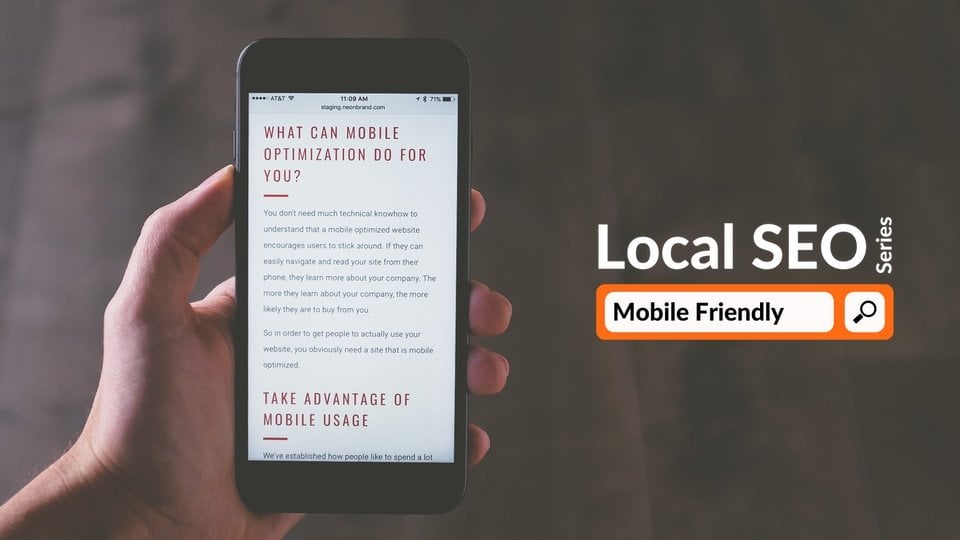In the modern digital age, having a mobile-friendly website is essential for any business that wants to remain competitive. With more and more people relying on their smartphones and tablets to access information online, companies must ensure their websites are optimized for use on these devices.
This is an important part of optimizing your site for search engine rankings (SEO). Mobile-friendly websites provide visitors with easy navigation, quick loading times and a pleasant user experience overall – all of which are vital elements in SEO success.
By making sure your website is designed with mobile users in mind, you can increase both traffic and conversions from this growing segment of internet users.
1. Benefits of Creating a Mobile-Friendly Website
Creating a mobile-friendly website is essential for businesses that want to be successful in the digital age. Mobile devices have become increasingly popular, as more and more people use them to access websites and browse online content.
As such, companies must recognize the importance of making their websites mobile-friendly if they wish to attract new customers and keep up with modern trends. The benefits of creating a mobile-friendly website are numerous.
For one thing, it allows your potential customers to easily access your site on any device – from smartphones to tablets and even laptops – without having to fiddle around with settings or download separate applications. This makes browsing much easier for users, increasing the chances that they’ll stay longer on your page or purchase products from you.
Additionally, many search engine algorithms take into account whether or not a site is optimized for mobile devices when determining its ranking; this means that sites which are not optimized may end up being buried further down in SERPs (Search Engine Results Pages). This could dramatically reduce the amount of organic traffic coming through your website by lowering its visibility among potential customers.
Furthermore, adopting a responsive design approach can help ensure consistency across all platforms while simultaneously reducing development time as well as maintenance costs; instead of designing several versions of a webpage specifically tailored towards different types of screens/resolutions (e.g., desktop vs tablet), developers can simply create one unified version which will adjust itself accordingly depending on what type of device it’s being viewed on . Finally, since most users tend to favor fast loading times when browsing online content , making sure that pages render quickly regardless of screen size should be another priority when optimizing for mobile usage .
All these factors make creating an effective mobile friendly website an absolute necessity in todays competitive market place.
2. Understanding the Necessity for Optimizing Your Site for Mobile Devices


Creating a website that is optimized for mobile devices has become an essential part of SEO. Mobile devices have become increasingly popular, with more users than ever before accessing websites on their smartphones and tablets. As such, it is important to ensure your website provides them with the best user experience possible.
This means understanding how to optimize your site for mobile usage – from design elements to content delivery. When optimizing for mobile use, there are several aspects which need to be taken into consideration: page speed, navigation ease-of-use and page layout must all be considered when creating a successful mobile friendly website.
Additionally, ensuring that text can easily be read without having to zoom in or out will also help provide visitors with a positive experience while using your site on a smaller display device. Furthermore, the content you create needs to be tailored towards providing users with the information they need as quickly as possible – this could include reducing lengthy paragraphs and including plenty of visuals alongside any written instructions or tutorials provided on the website itself.
Ultimately, it’s important that you take steps towards making sure your webpages are easy to navigate through regardless of what type of device they view it from; taking these measures will go a long way in ensuring people have access to the content you want them to see whilst still being able achieve tasks quickly and efficiently on whatever device they choose!
3. Strategies to Enhance SEO Through Mobile-Friendliness
Creating a mobile-friendly website is an essential part of any SEO strategy. A well-designed and optimized website can help your business gain visibility in search engine results, attract customers, and remain competitive in the ever-evolving digital landscape.
There are several strategies that you can use to ensure that your mobile site meets current best practices for SEO:
1. Leverage Responsive Design: Responsive design adjusts content based on screen size and resolution so that no matter which device a person uses to view your site, they will have access to the same information while being presented with an easy-to-navigate layout. This helps keep users engaged while also helping search engines better index webpages on multiple devices.
2. Implement Mobile Redirects: Mobile redirects allow you to provide different versions of webpages based on what type of device someone is using when visiting the page. By automatically redirecting visitors who are using smartphones or tablets to their own version of pages, it ensures they get an optimal viewing experience as well as allowing separate indexes for those specific devices so that each version has its own unique ranking factor within SERPs (Search Engine Result Pages).
3. Speed Optimization: Ensuring your website loads quickly and efficiently on all types of devices is key when it comes to engaging potential customers as slow loading websites tend to lead visitors away from sites entirely rather than waiting around; this means fewer conversions for you! Make sure each page contains minimal code by optimizing images where possible and removing unnecessary plugins or widgets if necessary; these small tweaks can make a huge difference in performance speeds across all platforms, increasing user engagement times significantly.
Conclusion

Having a mobile-friendly website is an essential aspect of SEO, and therefore should not be overlooked. Having a responsive design that works across all devices can help boost rankings on search engine result pages, as well as improve overall user experience.
Escort seo services can also assist in making sure your website is optimized for the best performance possible across all platforms. By ensuring that your site looks great and functions properly on any device, you are giving yourself an advantage over competitors who may be overlooking this important factor of SEO success.
